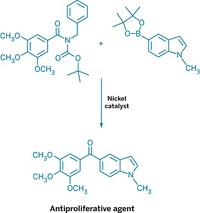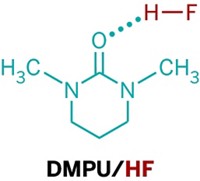Advertisement
Grab your lab coat. Let's get started
Welcome!
Welcome!
Create an account below to get 6 C&EN articles per month, receive newsletters and more - all free.
It seems this is your first time logging in online. Please enter the following information to continue.
As an ACS member you automatically get access to this site. All we need is few more details to create your reading experience.
Not you? Sign in with a different account.
Not you? Sign in with a different account.
ERROR 1
ERROR 1
ERROR 2
ERROR 2
ERROR 2
ERROR 2
ERROR 2
Password and Confirm password must match.
If you have an ACS member number, please enter it here so we can link this account to your membership. (optional)
ERROR 2
ACS values your privacy. By submitting your information, you are gaining access to C&EN and subscribing to our weekly newsletter. We use the information you provide to make your reading experience better, and we will never sell your data to third party members.
Synthesis
Fresh Air Aromatic Hydroxylations
Mild palladium chemistry selectively hydroxylates inert C–H bonds on aromatic rings using O2 or air as a green oxidizing agent
by Carmen Drahl
October 12, 2009
| A version of this story appeared in
Volume 87, Issue 41
A new palladium-catalyzed reaction brings researchers a step closer to an industrial process that could use air as an oxidizing agent to functionalize inert C–H bonds. Although an efficient, selective, and environmentally benign hydroxylation process is a long-standing goal for organic chemists, such reactions tend to be plagued by low yields or harsh conditions. Now, Yang-Hui Zhang and Jin-Quan Yu of Scripps Research Institute have found a way to hydroxylate C–H bonds on aromatic rings using O2 or air (J. Am. Chem. Soc., DOI: 10.1021/ja907198n). Their method operates at atmospheric pressure and doesn’t require acidic conditions. It selectively yields ortho-hydroxylated benzoic acids, a motif found in some pharmaceuticals, in moderate to high yields. On the basis of a preliminary study with isotopically labeled reagents, Zhang and Yu suggest that O2 reacts directly with the aromatic palladium intermediate. “This is the beginning of an exciting new type of synthetically useful C–H oxidation that may have many industrial applications,” says organometallic chemist Jan-Erling Bäckvall of Stockholm University.






Join the conversation
Contact the reporter
Submit a Letter to the Editor for publication
Engage with us on Twitter